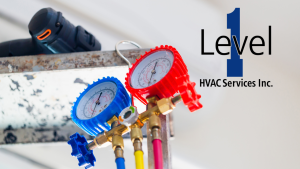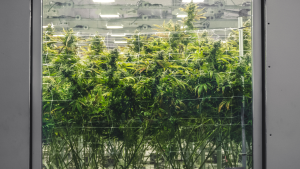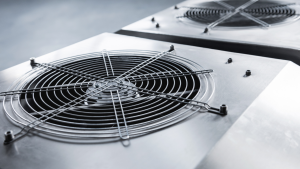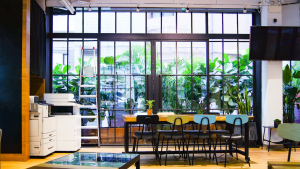It’s tempting to cut back on HVAC expenses considering that it’s spring, but we think that’s a mistake. There are numerous studies detailing the negative effects of poorly-maintained workplace temperatures. Today we’re going to see how the temperature in your office affects overall productivity and worker comfort—two of the most important things when it comes to your business. We’ll also talk about what steps you can take to ensure that your workplace is a safe environment that is conducive to achieving success.
While it’s in vogue to spend on cost-saving methods of boosting worker productivity such as gamification and office rewards, the fact of the matter is that when your employees are working, they need to be comfortable. On average, your workers are going to be at the office around 9 hours a day, 5 days a week—our employees in the U.S. actually spend more time in the office than anyone else in the western world. In the face of that, a foosball table or an arcade machine doesn’t really mean much if you’re freezing under a vent or sweating beside a window when you’re actually trying to be productive.
80% of office workers have complaints about office temperatures. That’s a staggering number. A full third of employees spend up to half an hour each day not working due to discomfort over either too high or too low temperatures. Up to 6% of workers spend more than an hour not working for the same reason. Imagine how many man-hours could be saved each year if we were able to cut complaints in half!
In a survey conducted in 2009, 27 percent of workers described their workplace as too hot; 19 percent said it was too cold; and 54 percent said it was just right. In a study by researchers from the Helsinki University of Technology, workplace performance was found to increase with temperatures (a “sweet spot”) up to 69.8 degrees and 71.6 degrees Fahrenheit, with peak productivity at around 71.6 degrees Fahrenheit.
Too hot!
Working in an environment that is too hot can make workers lethargic and unfocused. Heat stress can cause the body to lose electrolytes and water faster, causing low mental performance and decreased motor skills. Your body will be trying to preserve energy, which will undoubtedly slow your minds, making completing tasks and avoiding errors a difficult feat.
This is particularly problematic in workplaces where people are working in high temperatures with high humidity, poor ventilation and the use of heavy machinery and equipment that creates heat.
Too cold!
A study by Cornell University conducted at the Insurance Office of America’s headquarters found that workers who found their environment cold were more prone to make errors. They concluded that the average monetary penalty associated with these errors was estimated to be a 10% increase in each workers’ hourly labor cost. The takeaway is simple: cold workers make mistakes, and mistakes are expensive. Even simple tasks that should be no problem such as typing and writing became more difficult. Overall typing output increased by up to 150 percent when office temperature was within 5 percent of the temperature “sweet spot.”
Okay, so it seems like the “sweet spot” is the easy way to fix any issues. Just set the thermostat to 71.6 degrees Fahrenheit and everything should be peachy, right? Well, there are a number of factors that need to be considered that can alter the optimal working temperature such as season, clothing, humidity, age and gender. Men are less likely to feel too hot, women are twice as likely to feel a chill and people over the age of 55 are more likely to be affected by the cold. The most prudent method of maintaining a comfortable working environment may be to invest in Building Automation Services (or BAS) to take the guesswork out completely. BAS can be set to respond to the season, outside temperature, and even the amount of sunlight hitting the building—making your HVAC massively more effective at keeping people comfortable.
If you’d like to learn more about Building Automation Services, we at Level One HVAC are just a call away at (248) 486-6500. If you don’t have time for a lengthy phone call, simply fill out our online contact form and someone from our staff will be in touch with you shortly.
Stop by our social media accounts for all the latest news and information : Facebook Fan Page / Twitter Feed / Google+ Account / LinkedIn Company Page














